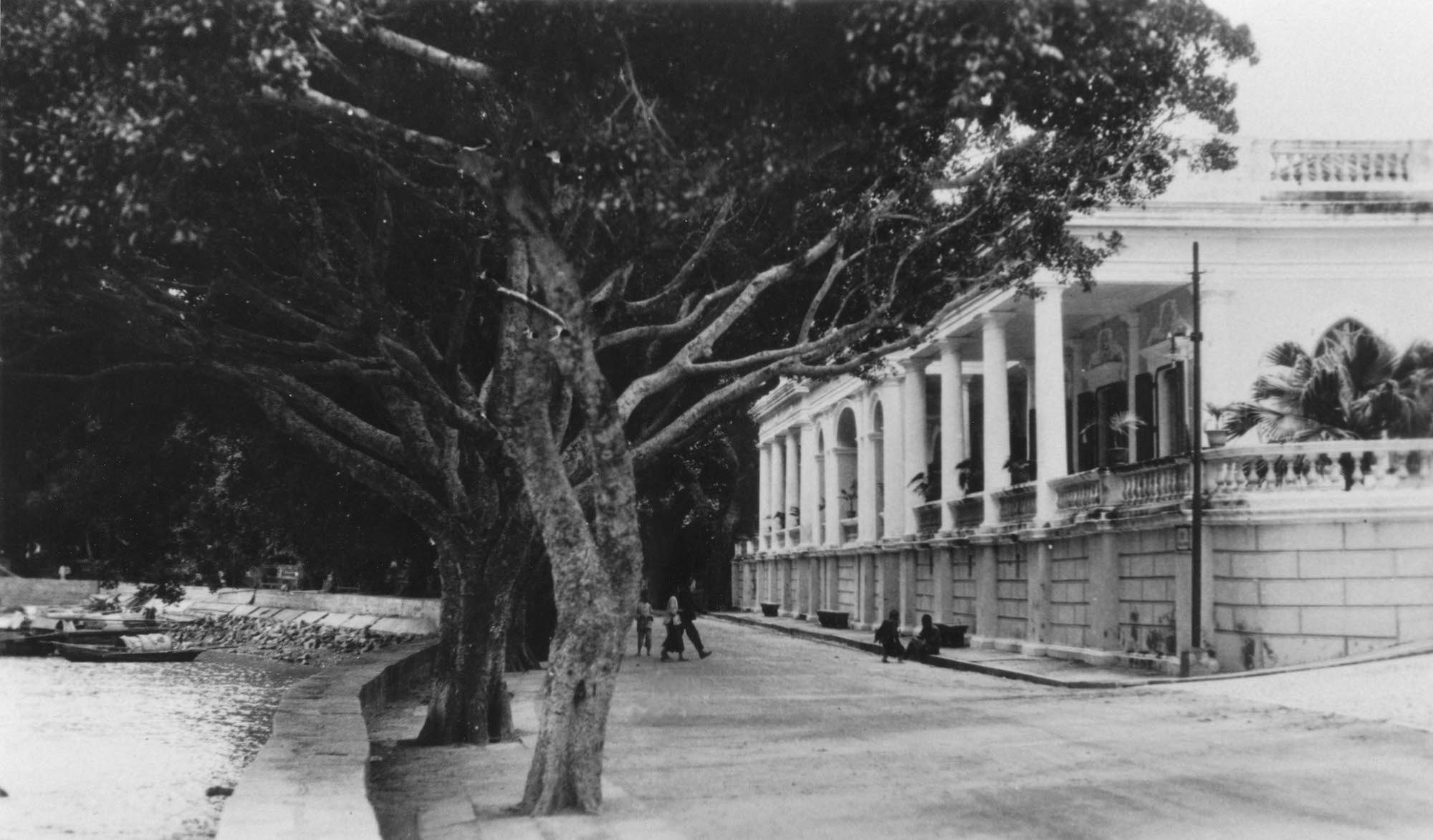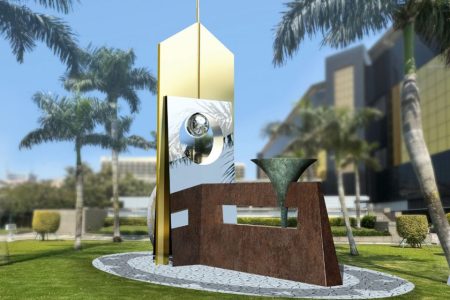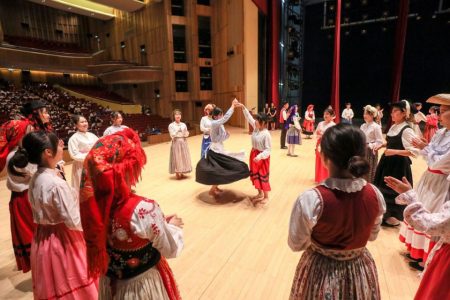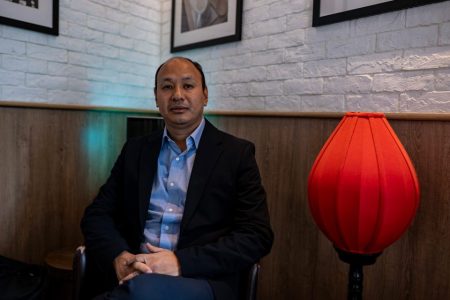Macao has transformed since the Portuguese first established a settlement in the territory more than 450 years ago, with many buildings, institutions and cultural ways of life coming and going over the years.
One historical hotspot, however, remains an important cultural hub. Welcome to the Macau Military Club, which celebrated its 150th anniversary in 2020.
Few institutions in Macao have managed to preserve their importance and place in the city quite like the Military Club, known in Portuguese as ‘Clube Militar’. The building houses a club and restaurant that sit in Avenida da Praia Grande opposite the glitzy Grand Lisboa.
But where the Grand Lisboa stands as a symbol of Macao’s recent economic and tourism success, the Military Club symbolises how an older way of life can successfully adapt to modern times.
A meeting place of brilliant minds

Ornate wooden furniture, embroidered Arraiolos rugs, 150-year-old chandeliers, valuable Chinese vases… history and culture surround you in the Military Club. Founded in 1870, the Military Club started as an exclusive social venue for the Portuguese military and their guests.
In the years following, many notable historical figures from the city, as well as China and Portugal, mingled in the club’s dining room and salons. For instance, Sun Yat-sen, known as the “founding father of the Republic of China” and once lived in Macao, was honoured at the club in May 1912 – the same year the Republic of China was formed.
Another famous man who once graced the club was Portuguese poet Camilo Pessanha, who gave a conference on “the pleasures of learning the Chinese language and culture” inside the club’s walls in March 1915.
Later, in 1953, it was decreed that “civilians and foreigners, for their social position and education” could also access the facilities. The move to welcome civilians, says Macao military history researcher Ricardo Borges, enables the club to adapt to many changes over time. As a result, it has continued to thrive and become much more than just a pretty landmark – it has become a crossroads of history and culture.
Borge speaks to us in the club’s lounge, surrounded by lush tropical plants under swirling wooden fans. For many years, he says, the institution’s patrons were the “intelligentsia” of the city – the “movers and shakers” of the day.
“For decades, the club was where all these intelligent people gathered to discuss current events and the geopolitics of China and Europe,” says Borge. “This was where the brilliant minds of Macao got together.”
Today, the Military Club’s walls showcase black-and-white photographs of celebrations involving Portuguese, Macanese and Chinese people. There are also plenty of colour photos that feature former presidents and prime ministers of Portugal and dignitaries from China. Alongside these images are paintings by renowned local artists like Nuno Barreto or Konstantin Bessmertny.

And that’s just the walls. The club’s guest book reads like a “who’s who” of modern China and Portugal. There are messages from former European Commission president José Manuel Durão Barroso – who, as Portugal’s foreign minister, attended the re-opening of the club in 1995 after a renovation project – and also from Li Yuanchao, who served as China’s vice minister of culture from 1996 to 2000 before he went on to become vice president of the People’s Republic of China in 2013.
From enlightenment to entertainment

The club hasn’t just been known for its famous and important patrons over the years. It’s also been known as a premier place in Macao to enjoy the arts.
Shortly after it opened, the club started organising conferences and then soirées, often starring opera and aria singers like Annie Loureiro. She excelled at interpreting the works of opera composers such as Italy’s Gaetano Donizetti.
The club also held elaborate banquets in honour of important visitors from Portugal, China or Hong Kong. In the early years of the club, these banquets rivalled those held by the Governor at his residence.
In more recent times, the club has turned a focus on literature and history. Historian and priest Father Manuel Teixeira, who authored more than 120 books on Asia and spent most of his life in Macao, wrote one of the best sources out there that charts the institution’s long history.
His book on the Military Club, “Clube Militar de Macau”, published in 1982, distinguishes “two generations and mindsets” – the 1870-1950 generation and the generation from 1950 up to modern-day.
He notes that the first generation’s purpose was to promote knowledge in Macao by assembling a library at the club that contained books on history, science, military topics and newspapers all “for the purpose of the enlightenment and entertainment of members.”
Over the club’s first 80 years, members enriched the club’s library with many rare books, including first editions of works by some of Portugal’s most celebrated writers. In 1983, during the club’s 113th-anniversary conference, the late Macanese writer Henrique de Senna Fernandes recalled poring over the rare, valuable first editions as a young man.
“Nothing remains of that library,” said Senna Fernandes in 1983. “[It was] stolen, eaten by white ants or burned, as it was, in the back of the building.”
While the original library no longer exists, history wrote some of its most remarkable pages at the club. For instance, during the Pacific War, between 1941 and 1945, Hong Kong was occupied by the Japanese, but Macao housed thousands of refugees from the neighbouring territory.
In his book, Teixeira argues that, during this time, Hong Kong refugees “scandalised” members of Macao’s military forces by using the club’s piano to stage cabaret sessions. This sort of lively event was unheard of in the city and, as a result, the piano was soon put under lock and key in the nearby São Francisco military barracks.
But the damage – at least, for Macao’s austere military leaders – was done; the popularity of the cabaret marked a new era for the club. After the war, it would swiftly become more open-minded and inclusive of new forms of entertainment, laying the foundation for its ability to change with the times and stay relevant.
Food, glorious food

All of the changes over the years – particularly the gradual relaxing of the club’s membership rules – have meant that today, most of the club’s 700 members are non-Portuguese.
One of the senior members of its board, Manuel Geraldes has been a constant presence at the institution over the last 30 years, overseeing some of the more recent turning points in its history, including the moment that Macao’s administration was transferred from Portugal to China in 1999.
“We at the club are at a crossroads of China and Portugal,” says Geraldes, adding that the club can be a “doorway” to Chinese culture since so many notable people from the mainland regularly use the facility.
But how could a Portuguese club with military roots remain relevant in Macao under the post-1999 Chinese administration? This was the problem faced by Geraldes and his board at that time.


They came up with a solution that suited both cultures: Focus on the food. Geraldes and his team set to work, creating spaces where people could gather around a table for a good meal – the Portuguese and Chinese way. They transformed the club restaurant into one of the city’s best.
Geraldes and Edmund Ho spearheaded the club’s culinary direction. “Ho asked me: ‘How many Portuguese restaurants are there in Macao? And how many are any good?’” recalls Geraldes.

The answer to that second question was “very few”, so they set out to create one of the city’s best Portuguese restaurants.
The club’s Portuguese restaurant opened to the public in 1995, but it took a long time to reach today’s impressive standards. In the early days, disagreements between chefs and kitchen staff rocked the restaurant’s stability.
Geraldes and his team eventually brought in an army chef, Firmino Pinto, who trained Filipino staff in basic Portuguese cooking. The training went so well that Pinto later returned and, today, most of the club’s kitchen staff has undergone his training.
In 2000, Geraldes and his team started a three-month residency programme with top chefs from Portugal to raise their profile and celebrate Portuguese cuisine. The first chef to join the programme was Vítor Sobral, an award-winning culinary master who left several dishes on the menu.
Since then, a long list of culinary stars from Portugal has donned the club’s apron, including celebrated maestro Fausto Airoldi in 2011 and multiple Michelin star winner Henrique Sá Pessoa in 2013.
Pioneering chef Miguel Castro e Silva also cooked at the club in 2015 and 2018, and creative female chef Justa Nobre created a series of dishes in 2012 and 2016. These chefs left a signature dish on the menu, making the club the only restaurant in the world where you can taste creations from so many Portuguese chefs.
Noélia Jerónimo, who owns the multi-award-winning Restaurante Noélia & Jerónimo in Cabanas de Tavira on the southern coast of Portugal, is one of the most recent resident chefs at the club’s restaurant.
The maestro, known for her exceptional seafood dishes, calls the club’s menu “a Portuguese food bible” thanks to the recipes’ quality and originality – these are not traditional dishes but creative contemporary masterpieces that use local, regional and Portuguese ingredients.






